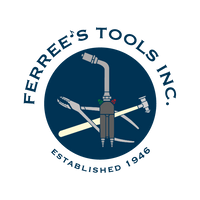Basic Clarinet and Piccolo Pads




What's it all about REALLY?
(Clarinet, Flute, Piccolo & Oboe frustrations!)

Part of the Woodwind Family
Answer: Getting the pads installed correctly and level. The best thing to do is, to try and use a thickness of pad where you don't have too large an amount of glue behind it; that you are depending on for your adjustments and leveling for sealing.
Many piccolos require B21 clarinet pads to function correctly and be repaired in a trouble-free way. In the old days we called that "floating", because you actually did 'float' the pad on a thick puddle of the white French cement. Now days, it has come to mean something similar, but not quite the same.
I've used B20's in piccolos with great success for many years, but the double skin qualities of the B21 make it more durable and quieter. In addition, the thicker cardboard on the back tends to keep the pad FLAT, which helps us, right? Also, you don't have the possibility of the French cement boiling over, bubbling or EXPLODING from behind the pad and burning you. Don't ask me how I know. (I must have heard or read about that happening somewhere.)
What will determine this glue/pad combo height is the depth of the pad cups and the attack angle of the pad cup to the tone hole. Many plastic or wood bodied instruments will need less total thickness, and many metal bodied piccolos will need more. There are all kinds of exceptions, you may need a combo of two different thickness' on the same piccolo, like the tapered bodied ones for instance. It is NICE if all the cups have about the same amount of pad peeking out from the cups or 'reveal', for 'aesthetic' purposes. You may have to 'adjust' the pad cup angle.
Don't depend on the pads to allow you ANY forgiveness and DON'T use Elephant fingers! These instruments need to be 'almost' perfect to respond and play well. There is not much room for error, or they won't respond well nor play easily, if not done with a high degree of precision. Be careful and use light finger pressure (or touch) and THINK about what's going to happen BEFORE you bend anything. Again, a safe rule is: Check the instrument over BEFORE you start working on it, and make all obvious corrections BEFORE changing any pads.
To install a pad look and see what's in there NOW. If it's all right and is just worn, DUPLICATE the overall thickness, etc., if it works and functions okay. That way you don't really change anything, except the pad. If there is a lot of glue up in the cup, remove it and put in a pad with a little glue on it that you can 'depend on'. I use the G67 amber shellac for many reasons as I've described often. If heated properly, it sticks, doesn't wear out and has a good "liquid" time. When you are all done the instrument should look like you were never there, that is unless, it was really screwed up when you got it.
The tools needed for doing these four instruments are simple if you are only changing the pads. A Feeler gauge (D35), a Pad Slick (E33), a Pin Prick (D44) and a heat source. I like the NEW L62 Butane Bunsen, it produces a flame just like the natural gas flame I have become used to after 50 years. A rounded blue cone point. Predictable, and not too hot. You don't want to scorch the shellac, or the pads may fall out in about 9 months if mistreated. Just Melt the glue (shellac).
PRETTY BASIC. DON'T HURRY. Be patient and the instrument will come to you.
Ferree's Tools-"Because they work!"
